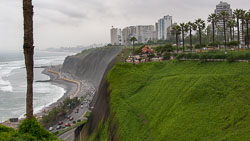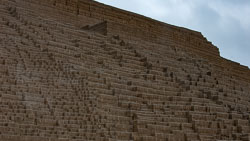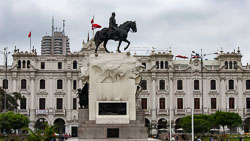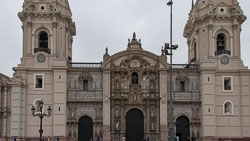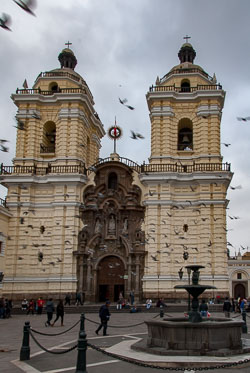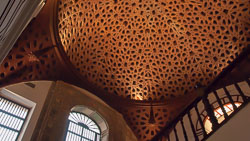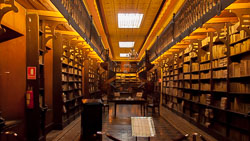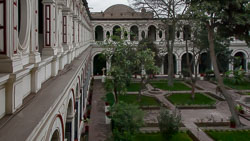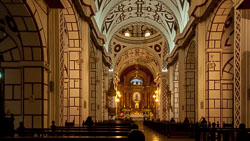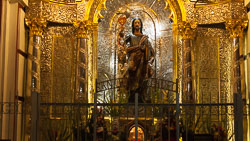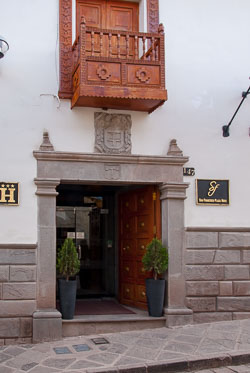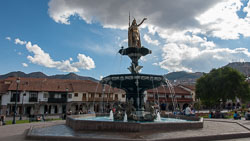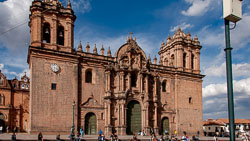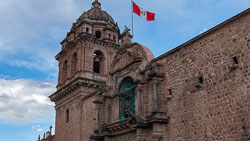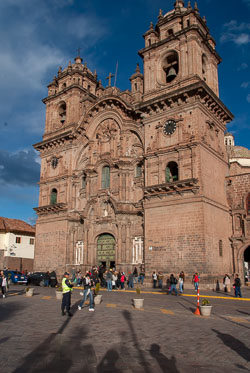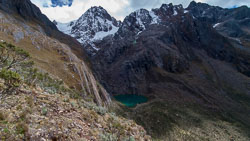The Cordillera Blanca Alpamayo trek is a trip that I have been aware of since the 1980’s, but until now there have been other trips that I wanted to do as well and those came first. I did benefit on this trip from the experience gained on all of my other treks. This was to be my first time in Peru, and I felt I had to see Machu Picchu as well since, well, how can you not, having come all that way? My trekking agency, KE Adventure, was able to organize an extension at the beginning of my trip to see Cusco and Machu Picchu prior to joining the main group back in Lima.
My flight from the United States arrived in Lima very late at night, so I booked an extra day in Lima prior to starting my extension, and that gave me time to take a city tour of the central Lima district.
I was able to enjoy a walk around central Cusco (the former capital of the Inca Empire) and take an organized tour of the main archeological sites and cathedrals before travelling to Ollantaytambo, in the Sacred Valley of the Incas, to prepare for the train journey to Aguas Calientes and then the bus up to visit Machu Picchu. I was able to spend several hours being guided through and exploring the iconic Machu Picchu and thoroughly enjoyed it; even the large number of fellow tourists did not spoil it.
The main part of my trek was in the Cordillera Blanca, an apt name for the range, with its snow-fluted summits, knife-edge ridges, tumbling glaciers, blue mountain lakes and steep-sided valleys. We spent 10 days trekking in this region, with elevations ranging from 12,000 feet to 16,200 feet. We crossed a total of seven high passes, on seven successive days. We started by following the Pan-American Highway north from Lima and then travelling east to the mountain town of Huaraz to begin the trek. We enjoyed two days of training hikes based in Huaraz to help acclimatize to the altitude, then drove north to the colorful market town of Carhuaz. We enjoyed a short walk around the town center before visiting Campo Santa in old Yungay. We then travelled east on a memorable road ascending to the Portachuelo de Llanganuco pass (15,680 feet) with glorious panoramas the entire way, and then left our vehicle behind and descended on foot to our first camp at Vaqueria (12,100 feet) which provided a great warm-up for the trek. Our first full day on the trail was a walk up the Tuctu Valley to a campsite at 13,500 feet, and from there the next seven days included a high pass, with enjoyable breakfasts, lunches, afternoon tea and delicious dinners each day. Early in the trek we camped in the picturesque Jamcapampa valley. Our campsite was shared with alpacas and dominated by the immense glaciers of Mt Pucajirca. We were visited by women from the local Quechuan villages who were delighted for the opportunity to sell us some Peruvian beer and cokes. Three days later we camped beneath Alpamayo, a beautiful symmetrical peak and the centerpiece of the trek. Alpamayo is probably the most famous peak of the Pukhara massif, the Cordillera Blanca’s most northerly massif. Even though it is dwarfed by neighboring peaks, the beauty of this mountain has long captivated climbers. In the final days of the trek we still had two more passes to cross, and spent our final night of the trek perched above Hualcallán and other small farming communities in the Callejón de Huaylas valley. Our cook organized a special pachamanca dinner: chicken, lamb and lots of vegetables cooked in a pit heated by super hot stones and stacked in layers of stones , food, banana and plantain leaves, more food, and covered with paper or straw and finally soil. An hour later you have a spectacular meal! Our final day we descended to Hualcallán and were met by our vehicles. A short drive back to Huaraz for a very welcome shower and celebratory dinner, and then the next day we were driven back to Lima to catch our international flights. A truly spectacular and memorable trip!
Normally on an Adventure Travel trip there are lots of things that can and usually do go wrong, but this trip was notable because all of the travel arrangements went off without problems and made the trip that much more successful. The only problem I encountered was a two day stretch of intestinal problems (not at all unusual on a trip to a third world country) at the beginning of the trek that slowed me down, but actually enabled me to ride a horse with a Peruvian saddle for a day to conserve my strength for the high passes to come.
